Sensoritorik, or the difficulties of creating a "smart home"
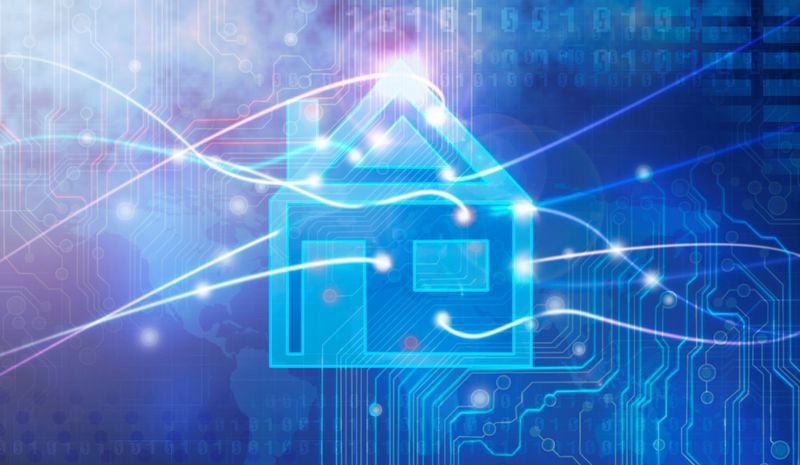
You can even buy LG toothpaste in the store, but if you want to buy a smart home from a well-known brand, a bitter taste of disappointment will visit you - the thought of IKEA for high-tech manufacturers is scary. In a world where Samsung creates self-propelled artillery, and Google launches milk under its own brand, an ordinary thermostat that automates all processes related to maintaining an optimal indoor climate has been developed in a startup.
The “smart home” is falling apart due to the simple incompatibility of products of various companies. It is difficult to configure the interaction of devices that communicate with each other in many ways and on the basis of different protocols, including communication via Wi-Fi, Bluetooth, Z-Wave, ZigBee, Insteon, and so on.
')
Who and why tears the "house of the future" apart?
Touch Internet

Fifteen years have been talking about the “Internet of Things”, we are beginning to gradually drown in various sensors, but so far we have not seen close to a single unified system for a “smart home”. Many devices have their own set of sensors, do not interact with each other, work according to their own protocols.
Take for example the Sony Smart Tennis Sensor, which collects information about the number of strokes a tennis racket, the acceleration given to the ball, the type of swing, the frequency of shots and the strength of the blow. The data is transferred to the app on a smartphone ... and die in it. You cannot load this data into another fitness app, you cannot calculate how many calories were burned while playing tennis, you cannot copy this data into a spreadsheet, and so on.
The “smart home” today is hundreds of such Sony Smart Tennis Sensor.
There are similar devices for runners. The runScribe sensor measures 13 indicators based on the position of your foot, which allows you to determine the characteristics of your run and select a more suitable technique. It sounds great, but the gadget is tightly attached to your application. Devices that connect to the car and read information via the OBD II protocol to the application on the smartphone and the cloud service provide interesting data (analysis of driving style, for example), but suffer from the same childish “greed”. Give someone else this valuable data? No, not that!
Online brands

“Smart Home” is still a toy for large brands, a means of advertising promotion, anything other than the real direction of industrial development. Year after year, companies carry tents with advanced equipment for the home, but after each show, consumers feel a little cheated. It cannot be said that nothing interesting happens in this direction at all. Every year we see an increase in the number of companies that are ready to engage in high-tech solutions for the home.
Apple launched the HomeKit program, thanks to which iOS devices will be synchronized with smart home devices to intelligently control doors, lights, temperature, security cameras, and so on.
American startup Quirky creates the company Wink, which develops a single network for automated home devices. The mobile application Wink will provide users with the ability to control almost sixty devices, including light bulbs, video cameras, electric drives, water heaters, installations for watering the lawn and much more. The Wink application is already available in the App Store and Google Play, but so far it can only control 5 gadgets.
Staples has expanded the capabilities of the Connect program, it includes several new devices for building a single home automation network around a single hub and within a single application.

The Microsoft partnership with INSTEON involves not only the mutually beneficial work of the products of the two companies, but also the support of devices from other manufacturers. Google and Samsung have teamed up to create a new wireless protocol that will replace Wi-Fi, Bluetooth and ZigBee. Thread standard is a low-power mesh protocol that will support IPv6. The standard is created on the basis of existing radio equipment, which will allow manufacturers to upgrade devices with a simple upgrade of software.
Control4 with its platform for building a "smart home" adapted a mobile application for Amazon Fire Phone, thereby breaking out of the framework of two popular mobile platforms. And even dozens of companies and applications that we did not mention, right at this moment are engaged in their own development of smart home systems, attracting new users, but adding chaos to the development of the industry.
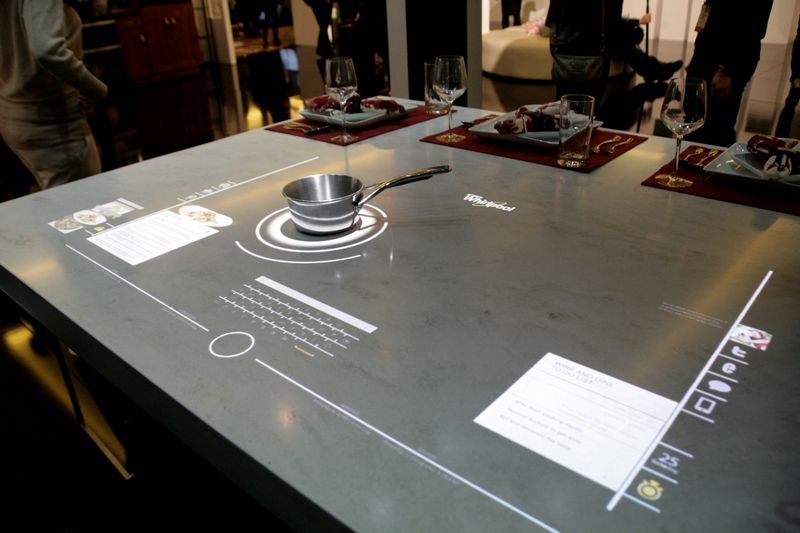
Companies GE and LG are furnishing their kitchen with innovative devices (“A smart refrigerator for a revolutionary new approach to storing products” - marketers delighted us). Philips connects the coffee maker to the network, and the hectic Whirlpool demonstrates dishwashers "with increased energy conservation." This is where the Second Great Problem appears in front of us - consumers do not buy the goods of only one brand in the house. There may be fans of Apple products would occupy this niche if the company expanded its product line, but everyone else, I buy a Philips coffee machine, do not put a washing machine, TV, lamps, video cameras and other devices of the same manufacturer. Some devices have a long life cycle, so the consumer has to combine products from different brands (and with different specifications).
Telecom Providers
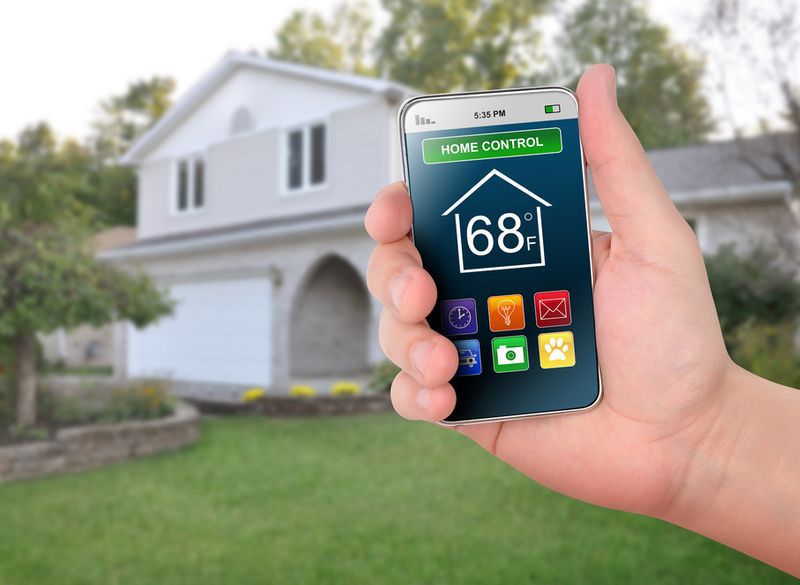
In the West, in some cases, companies that are suppliers of cable television and the Internet, can also offer solutions in the field of home security and automation. “Smart” security systems that react to potentially dangerous events, such as opening / closing doors or unusual opening times for an apartment, as well as allowing you to remotely set up digital thermostats, turn the lights on or off, watch video from wireless cameras, are offered by Xfinity (a project from Comcast), Time Warner Cable, AT & T, Deutsch Telekom and others.
This approach has some advantages (someone sets up the Internet for you, why not let them set up the rest), but after changing the provider (no one is perfect, people can change attachments from time to time) you will need to throw out a few devices in the same environment.
Startups
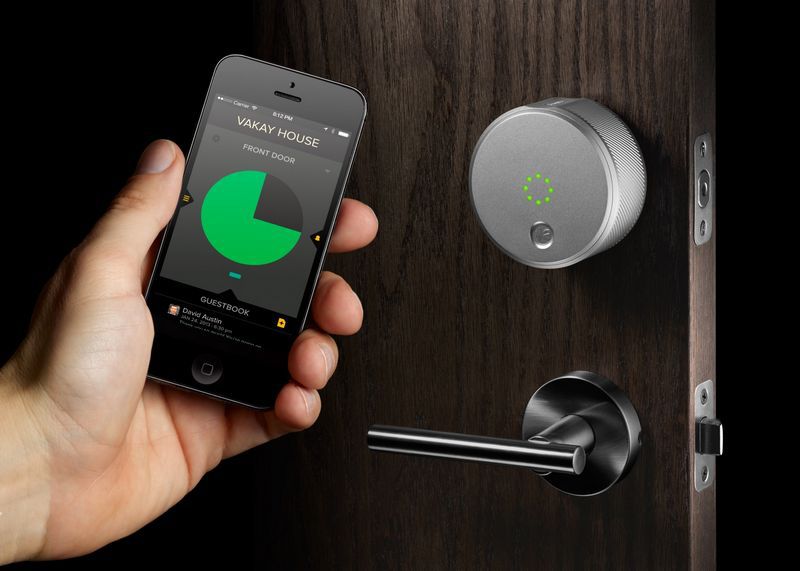
Popular do-it-yourself kits, Kickstarter, Indiegogo and other platforms are regular suppliers of new equipment for the smart home. LIFX LED Wi-Fi lamp controlled by iPhone / Android devices, August Smart Lock or Goji Smart Lock keyless lock, SmartThings hub with which you can control hundreds of different sensors and devices or analog hub from Revolv. Everything is so interesting, so you want to buy everything, regardless of the presence of a tangible chance to turn into a live beta tester of "raw" technology. It makes no difference whether you take a new product from a startup or trust a brand with a story - it is difficult to assess whether the device will be able to become part of the standard “smart home” platform.
Large companies sell single platforms, but they also promote to the market individual devices made in startups. Large players do not want to lose the market and, although they don’t put in as much effort as they could, they keep a “finger on the pulse” while tracking trends.
Housing companies
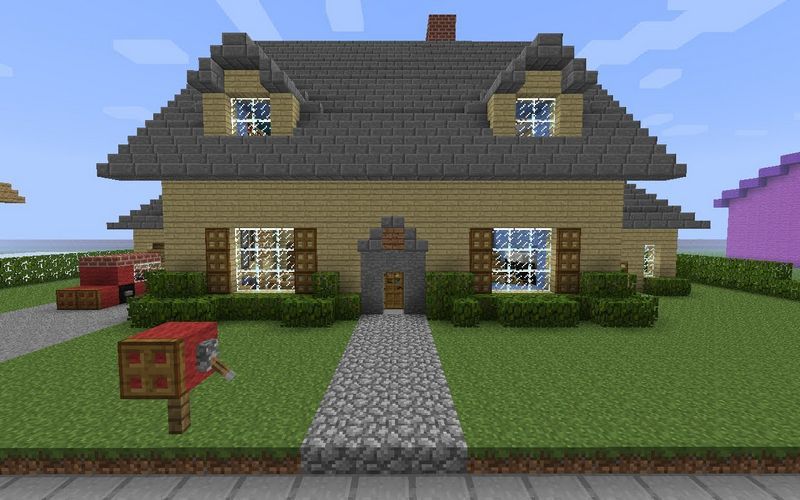
Construction companies are another important market players. Many of them are already beginning to think that home automation systems are the trend of the current decade. What could be simpler, build a house, stuff it with hundreds of sensors and sell more expensive under the sign of the future. IControl or Zonoff, seeking to be the first and get a quick profit, already appear on this field with a proposal to add their own security systems, power consumption and home automation.
There is a bit of reason in this - it seems easier to assemble the “smart home” right away than to try to fill the existing “box” with assorted devices. However, most construction companies still see few incentives for more innovative construction.
Technomonocultural Giants

Apple, Google and, perhaps, Microsoft are clumsily, but steadily beginning their invasion. Google bought the manufacturer of surveillance cameras Dropcam for $ 555 million, strengthening its position in home security niches and video monitoring systems. Earlier, Google "ate" Nest Labs for $ 3.2 billion, thereby experiencing depression after a failure with Android @ home, when the giant intended to manage various home electronics through its operating system on its own wireless standard.
Apple has traditionally been building around iOS with iPhones and iPads, but now it's hard to predict what the company will do next. Microsoft, on the other hand, does not want to once again give up the market to its competitors, so the partnership with INSTEON will not stop. For consumers, entering the “smart home” market of the largest IT companies carries several risks, from losing control over personal data (Apple security cameras - isn't Jennifer Lawrence a bad dream?) And even legal transfer to advertisers, before dividing the world of private houses into two camps - in line with OS dualism in phones.
What are we waiting for

From the "three whales of the Internet" we would like to get not a binding to the OS or platform, but some standard protocols that would allow devices from different manufacturers to exchange information with each other. Considering the security factor, we would like to see devices that can work locally without an internet connection.
The number of cheap sensors is growing exponentially, not because we really need five tracking sensors to take into account various aspects of the movement, or five car sensors telling about the consumption of liters of gasoline per kilometer of track. Rather, it is because there are no standards, no real market for sensory data, and there is no reason for all companies with different ecosystems to work together.
Are manufacturers ready to start thinking about their devices not in the smartphone-application relationship paradigm?
Based on https://gigaom.com/
Source: https://habr.com/ru/post/236951/
All Articles